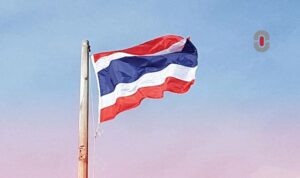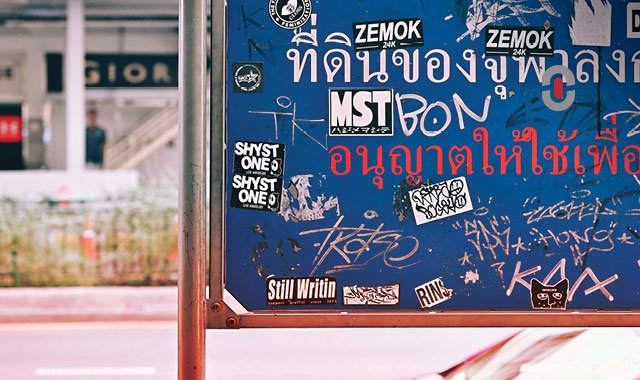Desktop publishing in Thai – also commonly referred to as DTP – can pose a challenge for companies and organizations seeking to enter the market. In exploring the intricacies of the language, we note that Thai is a tonal language consisting of five different and unique tones. This means that if a word is pronounced using the wrong tone, a speaker can convey and entirely different and erroneous meaning.
What’s more is that there are 44 consonants and 36 vowels, making it a much more complex language than English, for example. With all these intricacies and complexities of speech, what happens when documents, posters, websites, manuals, and more text-rich materials need to be translated into Thai? The fact is that certain challenges emerge with desktop publishing in Thai. But what is DTP, what challenges might you face, and how can you overcome them? We explore the answers to these questions in more detail below.
What is desktop publishing (DTP)?
Desktop publishing is a complex process of taking a document from a source language, say English for example, and converting the English text into a string of digital files. These files are then sent for translation and localization to native language experts from Thailand to ensure that the service yields an accurate depiction of the source text into the target language.
In this case, not only is a translation performed for a better understanding in the target language, but localization is also performed to ensure that the audience in the target language understands the intended meaning in their own way, while taking cultural nuances into account.
Furthermore, with desktop publishing in Thai, translators and desktop publishers must work together to ensure that the translated and localized piece of content is depicted in the best layout possible. This may result in the need to change colors, fonts, sizing, words, sentence length, and more to convey a beautiful and complete final piece of the given project.
What you should know about some DTP challenges for Thai
With its unique characteristics and qualities as a language, it’s important to note that there are very few, if any, foreign language influences in Thailand. This means that translation and localization, ans subsequently desktop publishing in Thai, can be problematic. Here are some of the challenges you might face when embarking on this endeavour.
Fonts: errors and options
Since desktop publishing in Thai necessarily requires specific Thai fonts to ensure that a piece of content and its graphical elements are accurately depicted for the target Thai audience, fonts can pose a challenge in DTP. Some desktop publishing software doesn’t necessarily cater to Thai fonts, or it does, it does not have a rich enough database of fonts to ensure an accurate localization and preparation of the final product for publication.
Absence of spacing between words
 One of the unique attributes of the Thai language is that it does not offer or use spacing between words. Instead, you’re likely to see long strings of texts that are unmarked in terms of where they begin and where they end. To the untrained eye, this can pose a problem. But well-prepared desktop publishers for Thai will be aware of the fact that there are word markers in Thai that indicate and prepare the reader for the next word in the sequence so that they’re better able to follow the ideas being presented.
One of the unique attributes of the Thai language is that it does not offer or use spacing between words. Instead, you’re likely to see long strings of texts that are unmarked in terms of where they begin and where they end. To the untrained eye, this can pose a problem. But well-prepared desktop publishers for Thai will be aware of the fact that there are word markers in Thai that indicate and prepare the reader for the next word in the sequence so that they’re better able to follow the ideas being presented.
As for desktop publishing in Thai, it’s crucial that the desktop publisher takes this important linguistic aspect into account and prepares the text for presentation in such a way that words are not split across two lines, thereby distorting their meaning or resulting in a nonsensical presentation of ideas.
Graphic preferences and cultural nuances
If your original design in the source language consists of certain colors, you may find that these will need to be adapted to Thai people’s cultural preferences. Some of the colors considered lucky in the country include red, yellow, pink, green, blue, orange, and purple. (These are essentially the colors of the rainbow). What must be remembered when doing desktop publishing in Thai is that a color in the source language may need to be completely adapted to preferred colors in Thailand.
Text expansion or text shrinking
Also worth noting is that text expansion or text shrinkage may take place when it comes to DTP in Thai. Research shows that for every English word that is translated and localized in Thai, we are likely to see a 15% expansion of the text. This necessarily means that DTPs should take text size and length into account when preparing the final product as not doing so can lead to awkward spacing issues that must be avoided.
Content that simply can’t be translated
Finally, there is text and content that is so culturally specific that it simply cannot be directly translated or get a near-perfect translation by using more words to explain the idea in question. This may refer to common sayings and idioms used by Thai people or other words that have no direct translation. This, therefore, poses challenges not only for translators and localization experts but also for desktop publishers who may need to change the entire layout of the source document to accommodate the new or near-accurate meaning of a word, phrase, concept, or sentence.
DTP for Thai is not an insurmountable problem
While we’ve emphasized some of the key challenges involved in desktop publishing in Thai, that is not to say that DTP should be considered an unworkable problem. On the contrary. With the right desktop publishing software and the right language experts at your disposal, you can have a fully localized piece of content that will be laid out beautifully in a publishing program to ensure that the text and visuals are as attractive to your Thai audience as possible. While DTP for Thai may seem like an insurmountable issue, there are workable solutions around it. You simply need the right partner at your side to present a visually stunning and textually accurate document.
